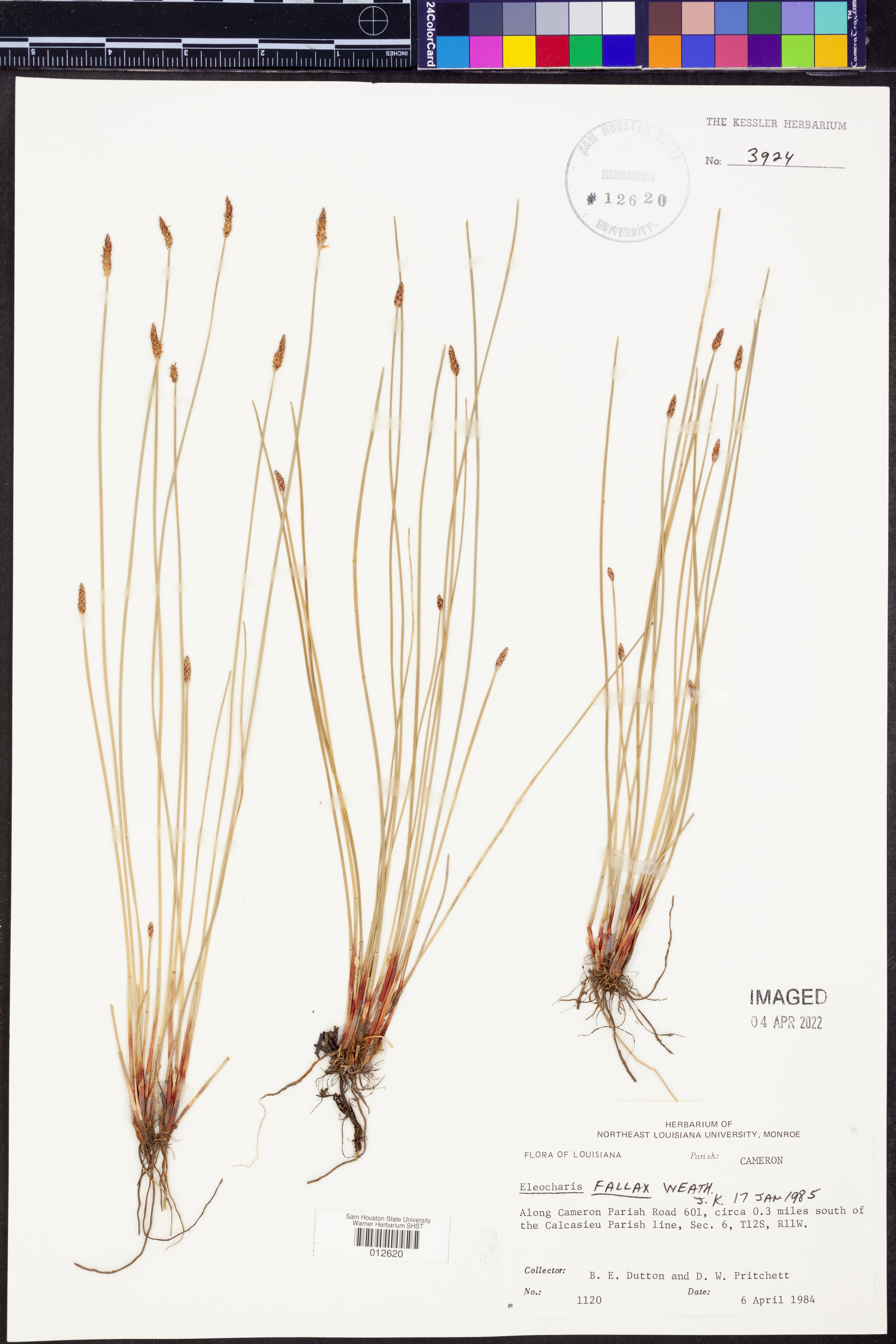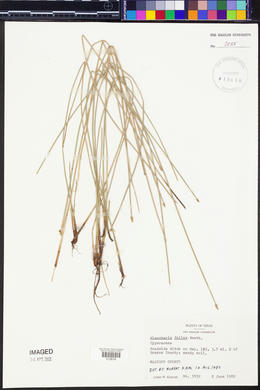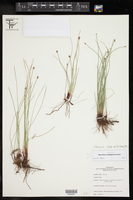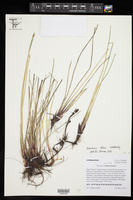Eleocharis fallax
|
|
|
|
Family: Cyperaceae
Creeping Spike-Rush
|
Plants perennial, mat-forming; rhizomes evident, long, 1-2 mm thick, firm, cortex persistent, longer internodes 5-10(-20) mm, scales sometimes fugaceous, 5-7 mm, papery (to membranous), sometimes fibrous. Culms terete, often with to 12 blunt ridges when dry, 30-75 cm × 0.5-1.5 mm, firm, internally spongy. Leaves: distal leaf sheaths persistent, not splitting, proximally dark red, distally stramineous or green, papery to membranous, apex dark red brown, obtuse, not callose, tooth rarely present on some culms, 0.2 mm. Spikelets ovoid or subspheric, 5-12 × 2-3(-4) mm, apex acute to obtuse; proximal scale amplexicaulous, entire; subproximal scale with flower; floral scales deciduous, often spreading in fruit, 10-35, 3 per mm of rachilla, red-brown to blackish brown, midrib regions sometimes green, ovate, 2.5-3 × 1.7 mm, apex entire, obtuse to acute, often carinate in distal part of spikelet. Flowers: perianth bristles 1-5, brown, stout, very unequal, rudimentary to equaling achene; stamens unknown [absent from specimens]; styles 3-fid or some 2-fid. Achenes not persistent, dark yellow or medium brown, obovoid to obpyriform, compressed trigonous, or some thickly biconvex, angles evident, 1.1-1.5 × 0.95-1.25 mm, apex rounded, neck very short (to absent), finely rugulose at 10-20X, 20 or more horizontal ridges in vertical series, finely cancellate at 20-30X. Tubercles whitish to brown, pyramidal, not depressed, as high as wide, 0.3-0.5 × 0.4-0.6 mm. 2n = 42. Fruiting late summer. Coastal, fresh to brackish pond and lakeshores, marsh; of conservation concern; 0-10 m; N.S.; Mass., N.J. The taxonomic status of Eleocharis fallax is problematic. I have seen only the type, from 1919 from a pond on Cape Cod, Massachusetts; a specimen from 1955 from Inverness County, Nova Scotia; and a specimen from the Passaic River marshes in New Jersey. It is reportedly extirpated from the type locality (M. L. Fernald 1950). Another specimen from Cape Cod is typical of E. fallax except for some lenticular achenes. I have not seen a voucher for the material, reportedly collected by H. K. Svenson from a brackish marsh on Plum Island, Essex County, Massachusetts, from which S.-O. Strandhede (1967) counted the chromosome number. It seems possible that these collections are of hybrid origin from E. elliptica and either E. erythropoda or E. uniglumis var. halophila (M. L. Fernald 1950). The plants are similar to E. erythropoda except for their trigonous, rougher achenes and sometimes fibrous rhizome scales, which suggests introgression from E. elliptica. Because some specimens of E. ambigens, including the type, have mixtures of lenticular and trigonous achenes, E. fallax is often treated as conspecific with E. ambigens, from which it differs only in its 3-fid styles, trigonous, more rugulose achenes, and higher tubercles. It seems best to recognize E. fallax as a species pending further research because the plants bear many, apparently normal achenes and are not exactly intermediate between their putative parents, and to avoid using a name for the widespread E. ambigens that may apply only to rare hybrids.
Much like the uniglumate forms of E. palustris, but the achenes prominently punctate-reticulate, often some or most of those on a given plant tricarpellate and obtusely
3-angled; culms maroon at the base; 2n=42. Fresh and brackish swamps along the coast; s. Mass. to La. and Tex.; Cuba. (E. ambigens) Gleason, Henry A. & Cronquist, Arthur J. 1991. Manual of vascular plants of northeastern United States and adjacent Canada. lxxv + 910 pp. ©The New York Botanical Garden. All rights reserved. Used by permission. |
|
|
|




























































































